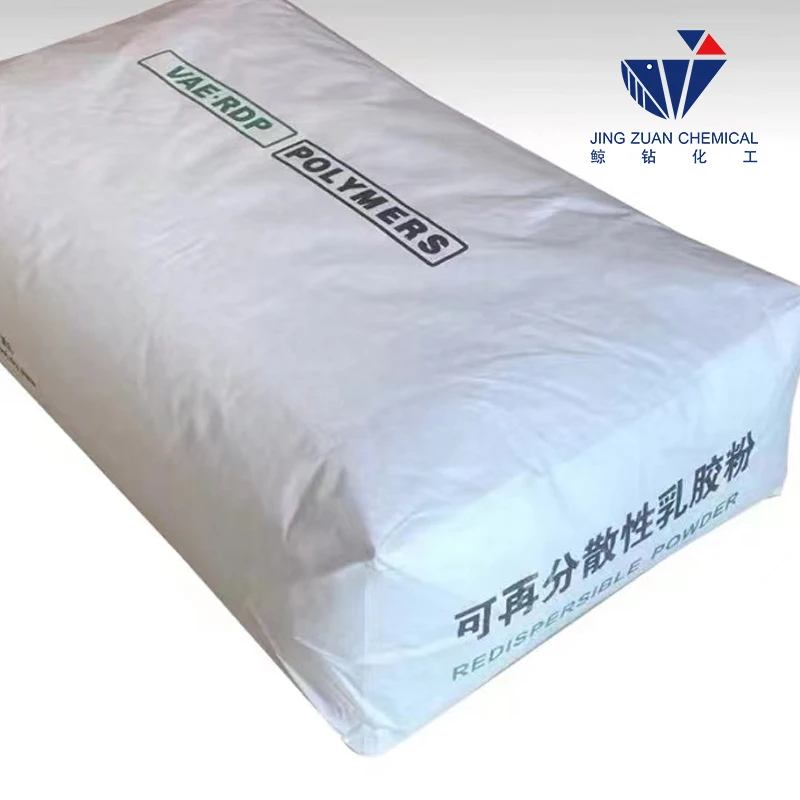
Dec . 29, 2024 06:27 Back to list
RDP Powder Cost Analysis and Market Trends for 2023 Insights
Understanding RDP Powder Pricing A Comprehensive Overview
In the world of chemical formulations, RDP (Redispersible Polymer Powder) has emerged as an essential component, particularly in the construction and building materials industry. The RDP powder price is a critical factor that influences the cost-effectiveness and overall competitiveness of products that incorporate these polymers. This article delves into the factors impacting RDP powder pricing, the market trends, and the implications for manufacturers and end-users.
What is RDP Powder?
RDP is a white, free-flowing powder derived from water-based dispersions of polymer emulsions. It is primarily used as an additive in cement-based products like tile adhesives, repair mortars, and self-leveling compounds. When mixed with water, RDP facilitates the re-dispersion of the polymer, enhancing the mechanical properties and flexibility of the hardened mix. RDP powders effectively improve adhesion, workability, and water resistance, making them indispensable in modern construction practices.
Factors Influencing RDP Powder Prices
1. Raw Material Costs The primary driver of RDP powder prices is the cost of raw materials used in its production. Fluctuations in the prices of petrochemicals, which are crucial for manufacturing these polymers, can lead to significant changes in overall RDP prices. Additionally, availability issues due to geopolitical factors can further exacerbate these cost fluctuations.
2. Production Processes The complexity of the manufacturing process impacts the final price of RDP powder. Advanced production techniques and the implementation of innovative technologies can lead to increased efficiency and reduced costs. However, investments in improved production methods may initially raise prices until economies of scale are achieved.
3. Market Demand The demand for RDP powder in the construction sector, influenced by economic conditions and trends in construction activity, directly affects pricing. In periods of economic growth, increased construction projects drive up demand, which can lead to higher prices. Conversely, during economic downturns, demand may decline, thereby reducing prices.
4. Geographical Variations RDP powder pricing can vary significantly across different regions. Factors such as regional demand, shipping costs, and local market conditions play a crucial role in determining prices. In areas where construction activity is booming, RDP prices may increase due to higher competition for limited supplies.
5. Quality and Specifications There are various grades of RDP powder available, each tailored to specific applications. Premium grades with superior performance characteristics typically command higher prices. Manufacturers needing specialized products may opt for higher-quality RDP, leading to variations in pricing across different offerings.
rdp powder price

Current Market Trends
As of late 2023, the RDP powder market is witnessing several notable trends. Firstly, there is a growing emphasis on sustainable construction practices, leading to increased demand for eco-friendly additives. Manufacturers are thus focusing on developing RDP powder formulations that are more environmentally friendly without sacrificing performance.
Furthermore, the rise of smart construction technology has spurred innovations in product formulations, leading to the introduction of more advanced RDP powders. Such innovations may initially lead to higher prices but can offer long-term cost savings through improved performance and durability.
Additionally, geopolitical tensions and economic uncertainties have resulted in unpredictable supply chain dynamics. This instability can lead to price volatility, making it essential for manufacturers and consumers to closely monitor market conditions.
Implications for Manufacturers and End-Users
Understanding RDP powder pricing is crucial for both manufacturers and end-users. For manufacturers, staying informed about market trends and production costs allows for better pricing strategies and inventory management. Moreover, engaging in long-term contracts or diversifying raw material sources can help mitigate the impact of price fluctuations.
For end-users, particularly within the construction industry, knowing the factors affecting RDP powder prices helps in budgeting and project planning. It also highlights the importance of selecting reliable suppliers who can provide consistent quality and stable pricing over time.
Conclusion
The pricing of RDP powder is influenced by a myriad of factors including raw material costs, production processes, market dynamics, and geographical considerations. As the construction industry continues to evolve, so too does the landscape of RDP powder pricing. Both manufacturers and end-users must remain adaptable and informed to navigate this complex market effectively. Understanding these elements not only aids in making informed purchasing decisions but also fosters a more robust and resilient approach to construction practices in an ever-changing economic environment.
-
Unlocking the Benefits of HPMC Products: A Gateway to Versatile Applications
NewsAug.07,2025
-
Unleashing the Potential of HPMC Ashland: A Comprehensive Look
NewsAug.07,2025
-
Tile Bonding Cellulose: The Key to Superior Adhesion and Durability
NewsAug.07,2025
-
Hydroxypropyl Methylcellulose Powder: The Versatile Component in Modern Pharmaceuticals
NewsAug.07,2025
-
Hydroxyethyl Cellulose: The Versatile Solution for Various Industries
NewsAug.07,2025
-
Hydroxyethyl Cellulose (HEC): The Versatile Polymer for Various Applications
NewsAug.07,2025







